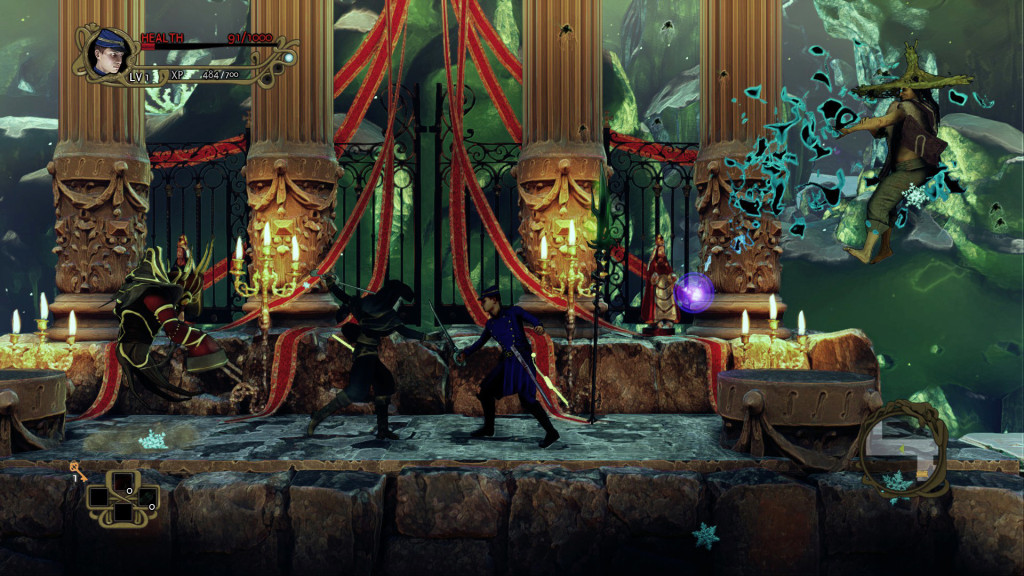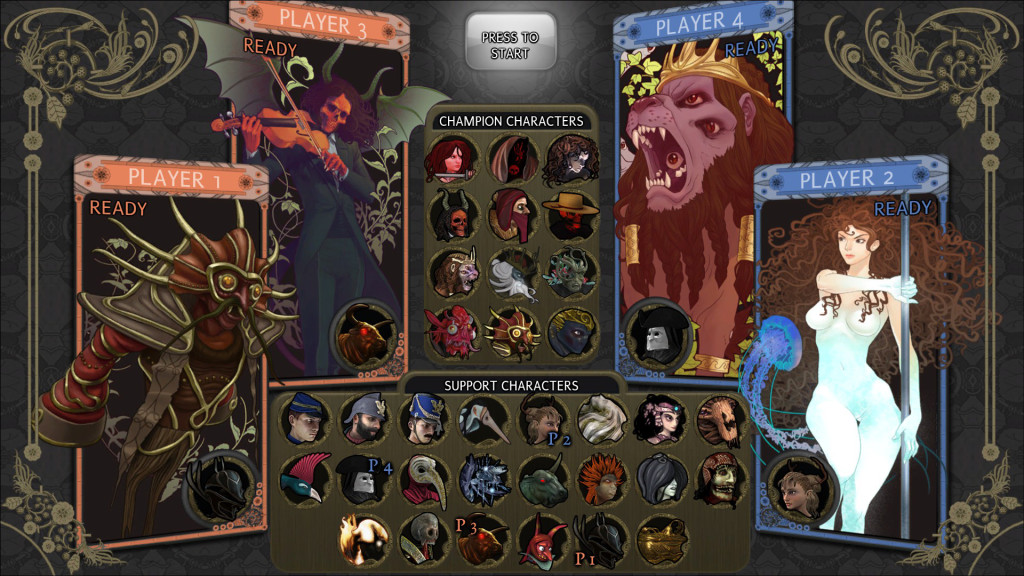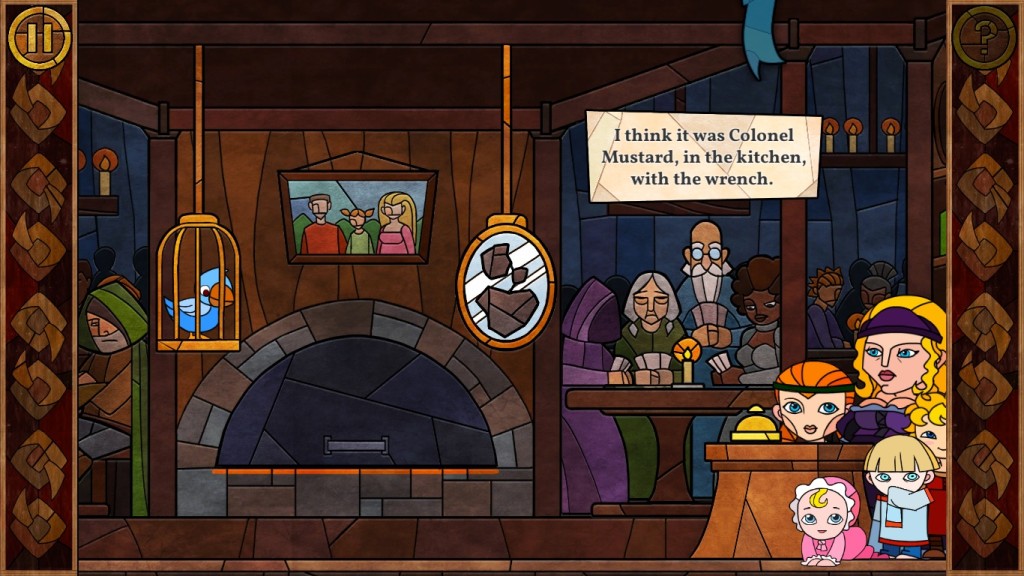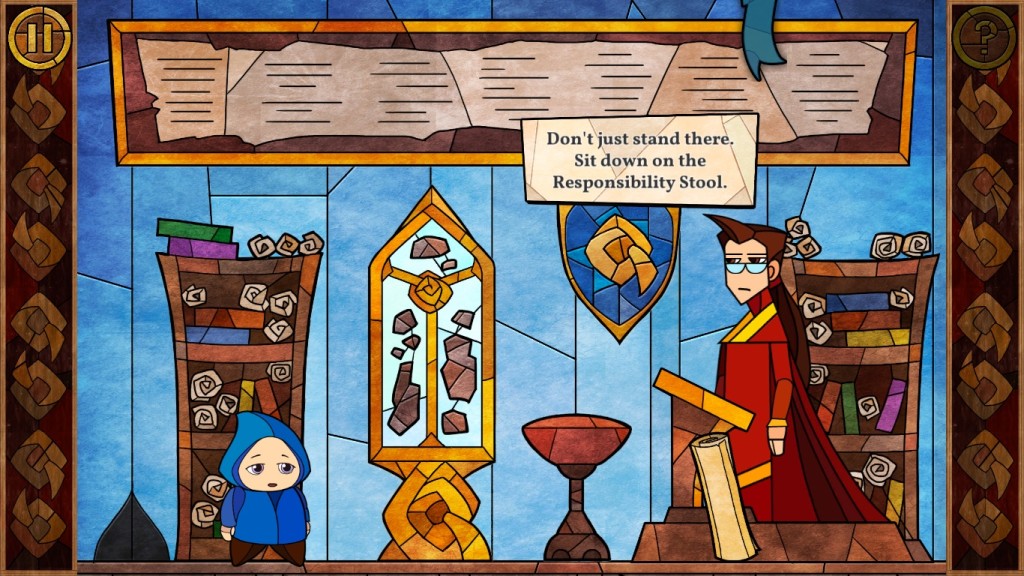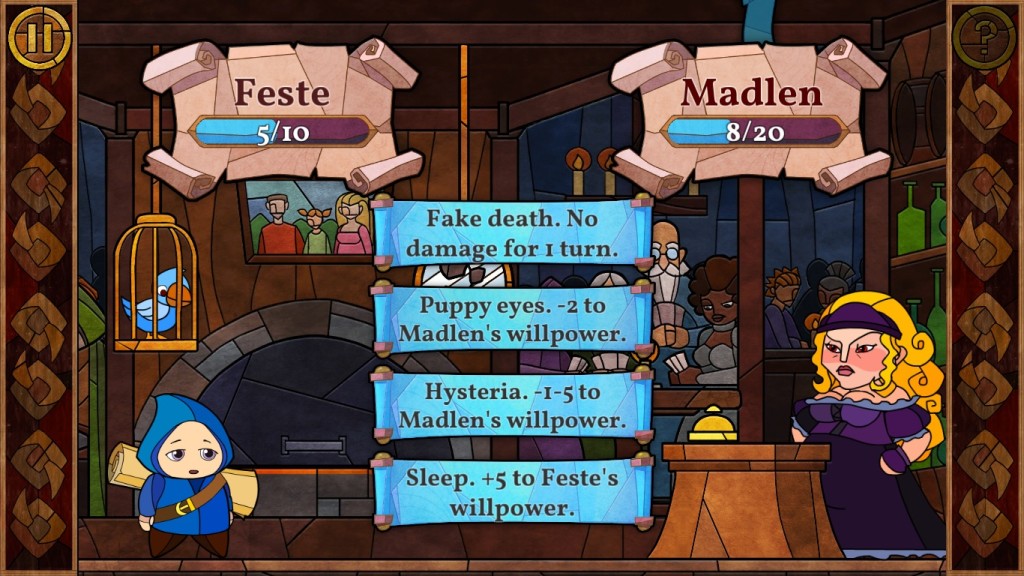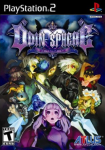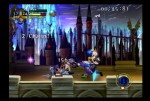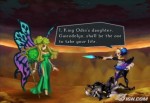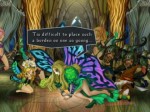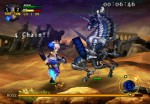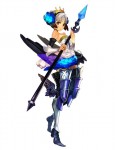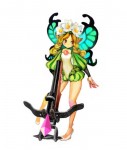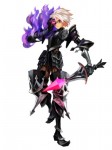Developer/Publisher: Dan & Gary Games || Overall: 9.5/10
I often wonder what a “perfect” game would be for me, as a gamer, rather than a reviewer. There are merits such as admirable game design, interesting story, fun game mechanics, but what do **I** really want to play. I like things that are strange, humorous, and keeps me guessing, among other things. Super Daryl Deluxe is one of those odd times that I could potentially say “I want something like this” and it actually exists.
Set during the post-apocalypse of a seemingly “libertarian” self-help renaissance society, Super Daryl Deluxe is what I would call a “post-modern fantasy”-themed Brawler RPG. It integrates a lot of famous historical characters, LARPers (known as the Dwarves & Druids Club), and other popular science fiction elements thrown in to make things even more weird. There’s also a lot of cultural references, like the Paranomal Club based on the “Ghost Hunters” TV show, or “Skrillex” (known as Little Johnny) being an antagonist. There are plenty of original characters as well, and the mish mash of all of these different crowds makes for a packed game. The world-building reveals itself as unexpectedly deep for this genre, and you never know who or what you’re going to see next.
Lots of satirical jokes are found throughout and a lot of attention to detail to the humor really shows. As a literal silent protagonist, the titular, spaghetti-limbed character, Daryl, never speaks or reacts to people when they talk to him; they react to him, thinking he is an idiot, or just filling in the blanks themselves — its an obvious parody of silent protagonists in RPGs. The story itself starts small, then grows bigger, as you are tasked with a simple thing like “get a can of spray from the janitor’s closet” which then leads you into a surreal adventure across time and space and air vents large enough for a space ship, located in the bowels of a high school that is itself breaking through into different dimensions. Surrealism is the key word of this game as you go ever-deeper into the craziness, and all of the characters being “okay” with it all just makes it that much more bizarre. Parallels can be drawn to the game Frog Fractions in this sense, but there aren’t any abrupt genre switches.
There is a retelling of the game’s satirical story in an in-game journal that satirically retells it — what shows up in the journal is never quite what actually happens. This becomes a bit of a fourth wall breaking experience as the Journal “writer” feels like an observer who is talking to you directly. Normally, most of the story is communicated through dialog, which never seems to outstay its welcome, but can get a bit winded at times. The way the writing is structured, it would probably not work if it was all completely voice acted, however, there is voice acting for the handful of cut scenes. The introductory cut scene is strangely unnerving, and while it doesn’t exactly explain what is going on in the story, it does set the “mood” for what is to come.
The art is absolutely the most appealing aspect of the game. Everything exhibits a hand-drawn quality and colors are used intentionally to bring important details out on the characters. With so many little touches and details to the art, the result is a high production value that is reminiscent of a television cartoon show. Enemies have fun designs and despite the theme shifts from one area to the next, all of the characters feel like they belong in the same universe. Music is also a high point where most of the tracks integrate the name “Daryl” into the song. I never would have figured that “Daryl” could work across so many genres. Other sound effects are good and add to the overall experience, especially when it comes to the abilities you use and landing hits.
As Super Daryl Deluxe is a “Brawler” RPG game, you’ll find a lot of variety and a build-your-own combo system. You can choose what works for you instead of being relegated to a set of abilities, with around 20 or so to choose from. Many abilities are also humorous or cartoony, which fits nicely with the art style. Equipment is also a thing, which gives a lot of depth to the overall gameplay. The inventory system is very easy to manage and offloading equipment for “lunch money” allows you to buy textbooks, which allow you to buy more abilities. Lunch money also drops from monsters as you kill them. The currency system feels very balanced, so even as you gain exponentially more money, the cost of items you buy also go up. There is also some simple crafting which is really just purchasing equipment with the required materials.
There are a wide variety of maps to visit, with very elaborate room layouts and fun themes, such as Science, Arts & Music, History, the Air Vents, and a couple of other smaller areas. There are a lot of secrets to unlock and leveling certain abilities allows you to unlock chests or other special rooms. As you progress in the game you’ll be able to go back to earlier areas and get into rooms you weren’t able to previously. Some new formats to play also pop up, such as the Dwarves & Druids questing, or re-summoning old bosses for exclusive loot.
The game is very long for this genre but it stays fun. I’m already at fifteen hours and have no idea when the game will end, but I would guess I’m getting close. But, I’m still only in “Part 1” and supposedly there are five parts. Fifteen hours is what they are advertising, so I suppose your mileage may vary. A small amount of grinding is also necessary to level up so you don’t just skip through all of the areas with enemies — monsters have levels and will get harder as you go along. If you do all of the side quests, it helps you with the grinding, but it really isn’t that bad if you’ve found a good set of abilities to quickly defeat enemies with. While I wouldn’t classify the game as difficult, I had fun experimenting with all of the different abilities and finding out what worked the most. I died only a handful of times, and the bosses are unique gameplay challenges that mix up the logic of beating the crap out of everything to something more strategic. Occasionally, I didn’t read something or forgot what I was supposed to do, so I would run around aimlessly trying to do things to progress the story cussing and getting frustrated about not knowing what to do. But this happens to me in almost every game.
That’s really all there is to it. Super Daryl Deluxe is an experience in and of itself, and a unique one at that. There’s nothing bad about it, really — so what prevents it from getting a full 10/10? The lack of a really engaging game loop that makes you want to come back for more is probably what holds it back from that. The game is also very linear, and while you can visit older zones, they aren’t made relevant again — though you spend a lot of time in each of the zones while you are there. Presumably there are reasons to revisit as there is a locked mysterious blue door in each of the main areas, with no explanation attached. I could also see playing through the story once and just being done. Despite that, a lot of personality and love went into this title and it shows. The art is great and a real treat. If a sequel ever comes around, I’d like to see what direction they take it in.
































